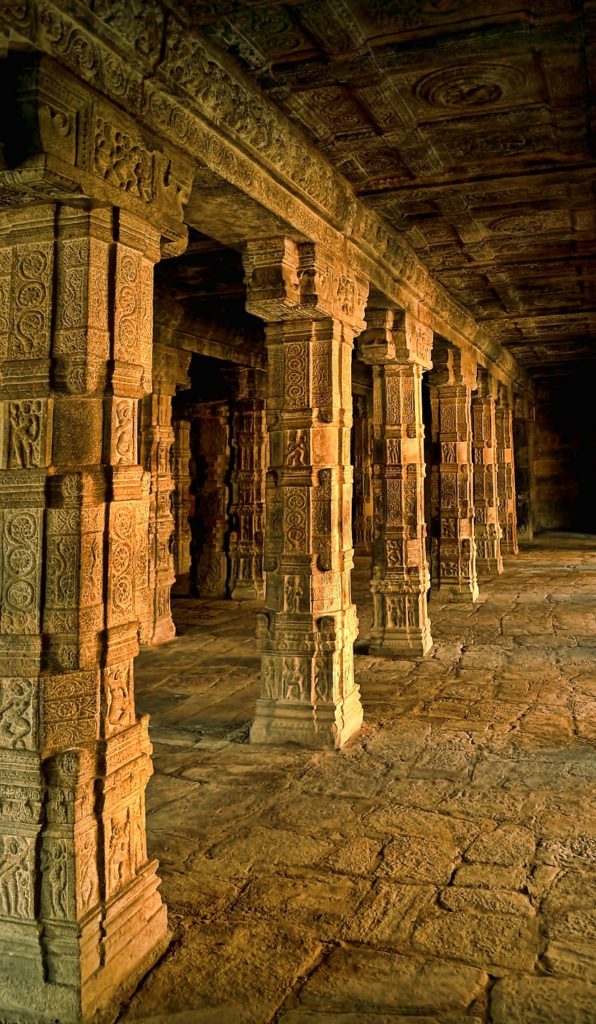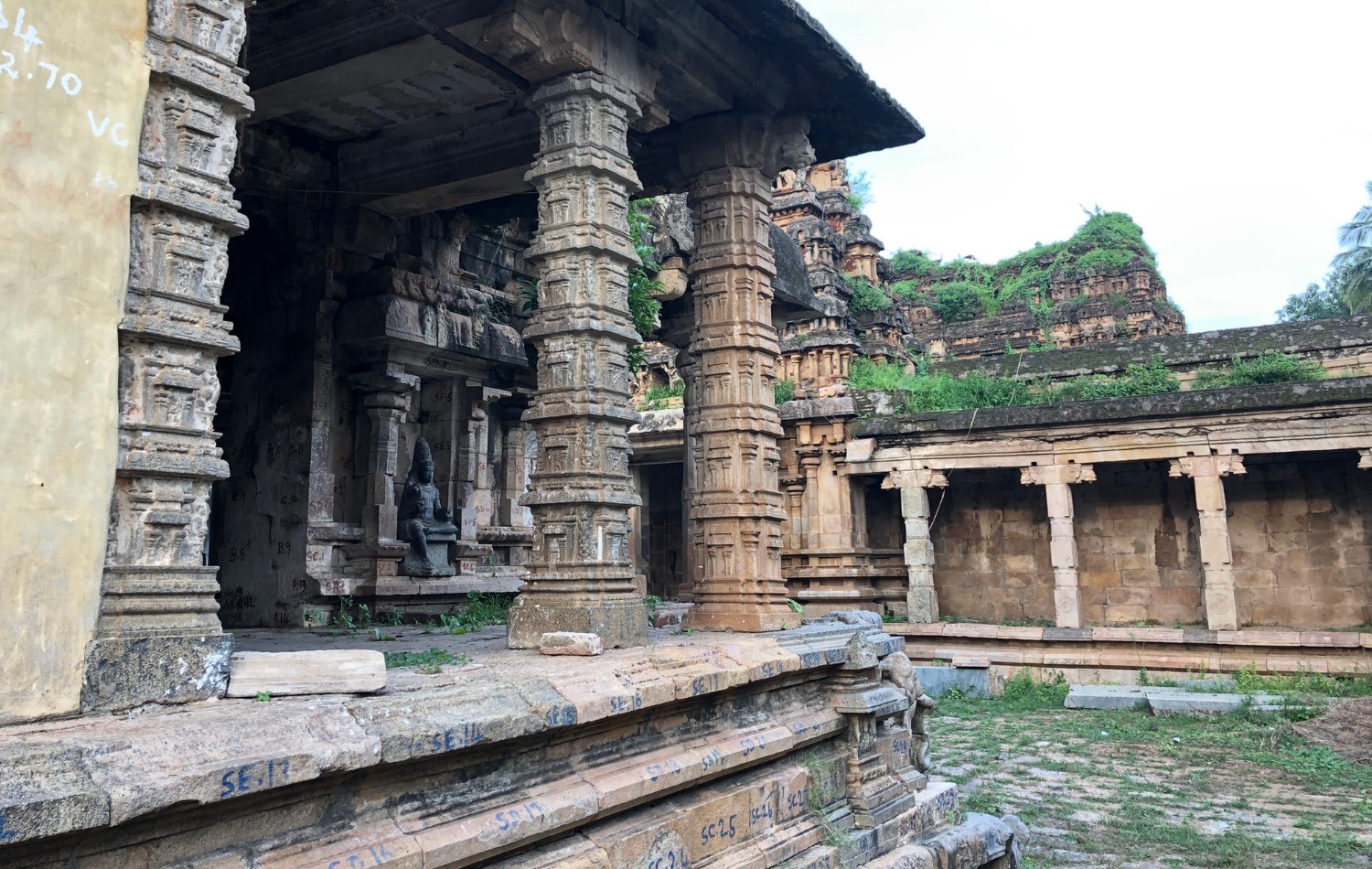Why Protect Temples?
“Know that there must be a manifestation of God in places where countless people have practiced austerity. From time immemorial numerous devotees of realization have come to these Holy places to have the vision of God. Therefore, God, though equally present everywhere, manifests Himself especially in these places the same water can be had anywhere by digging the ground, but where there is a tank or a lake, one does not have to dig for water but can get it whenever one likes”Hindu temples are epicenters of powerful, healing energy of enlightened masters and Rishis. The deities in Hindu temples are living deities that don’t just heal people but respond to their prayers. A temple was meant to be a place where an individual can spend quality time with his ishta devata, or chosen deity, to further in his/her spiritual journey. Hindu temples were built by kings and masters as enlightenment ecosystems. Destruction of Hindu temples destroys this place and space. Once a deity is defiled, damaged, or even moved from its place of installation, it no longer radiates the same energy. Destruction of Hindu temples is the destruction of the spiritual lifeline of Hindus and spiritual seekers.Every Hindu temple is a masterpiece of excellence in architecture. Even the remotest, smallest temple which is a few centuries old is not plain, but rather exquisite in its architectural design, carving, the precision of elements, and interpenetration of open and built spaces. Many temples have unique features of sunlight falling at the feet of the presiding deity etc. Hindu architects were maestros, who were not just skilled, but extremely precise in their execution of designs, and knew the movements of the suns and stars very well. The Tanjore Golden temple was called so because it was fully covered with gold. Architectural elements in the stone reveal this. When these temples are destroyed, we lose not just a structure of ancient heritage, an enlightenment ecosystem, but also all the knowledge and artistry that goes into the architecture and construction of temples. Vastu shaastra was a unique science, not found in such great detail anywhere else, which gave insights into the right placement, materials, construction methods etc for the construction of all types of buildings, especially temples, for harmony and auspiciousness. This science has its source directly in Hindu scriptures.There are very few architects and designers alive today who know how to build temples in the way they were built many centuries ago. This is because this art and science are almost destroyed.Above all else, Hindu temples serve as a unifying force in areas where Hindus are in small numbers. In countries and regions where Hindus are minorities, the Hindu temple is still the center of all religious activity – all religious festivals are celebrated in the temple. All initiations and family ceremonies are performed in the temple. It brings Hindus together. In areas where there are no Hindu temples, tribals and Hindus suffer the threat of forced or unlawful conversions to Christianity or Islam, by evangelicals and extremists. With no unifying force, Hindus feel directionless and lonely and are bereft of a support system and community that can protect them from such attacks on their faith.
The Significance of Temples
Hindu temples were meant to be the focal point of the settlements, where all the activity happens from dawn till dusk. The break of dawn would announce the ringing of temple bells, with religious offering of arti, then there would be distribution of naivedyam to the devotees, and the rest of the day was spent in preparations of the naivedyam, decorations for the deities, study of scriptures, chanting of mantras, and the day would end with another arti. Temples were the hub of all activity in Hindu towns and cities in the ancient ages. A Hindu temple was designed to thrall all the six senses, to lift seekers out of their low mood, and give them the guidance they are seeking.
This significance of temples has undergone a drastic change in the last 1500 years. Before the advent of invaders and colonialists, India was Akhand Bharat, spanning most of South Asia. This is why most of the South Asian countries are dotted with majestic, brilliantly carved Hindu temples, which are a feast for the eyes.
Hinduism, or Sanatana Hindu dharma, is polytheist. Not only does it have many “gods,” as per the tenets of Hinduism, everything is Divine. Every being is Divine, and they take multiple births until they realize this Divinity. Every birth is another stepping stone to their Ultimate liberation. The first verse of the first Upanishad, Isha Vasya Upanishad, says this clearly:
īśāvāsyamidaṃ sarvaṃ yatkiñca jagatyāṃ jagat |
tena tyaktena bhuñjīthā mā gṛdhaḥ kasyasviddhanam ||
Isha Vasya Upanishad, Verse 1
The goal of all life, as per Hinduism, is realizing your own divinity. That is enlightenment, that is Moksha, that is liberation. Deities are a part of this enlightenment ecosystem, which enables any spiritual seeker to connect with and realize their divinity. What you admire, what you constantly think, you become that. Hence, spending time in the presence of Hindu deities, offering worship and prayer to them, cherishing a feeling of devotion towards them, is the simplest and sweetest way to progress on the path towards one’s own divinity. A Hindu temple is a place where the energy field of a certain deity can be experienced by anyone entering the temple.

Deities, in most Hindu temples, are not just carved statuettes of stone but are living deities. By means of an elaborate process called prana pratishtha, the presence and energy of the Hindu god/goddess is invoked in the idol, and after the ritual is complete, the deity then radiates all the auspiciousness and qualities of the Hindu god or goddess. When this process is completed by an enlightened being, its power is manifold. These processes are different for every god or goddess, and are elaborately described in the Agama Shaastras.

